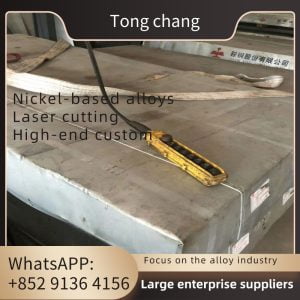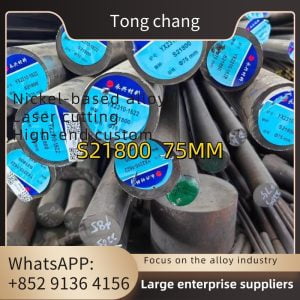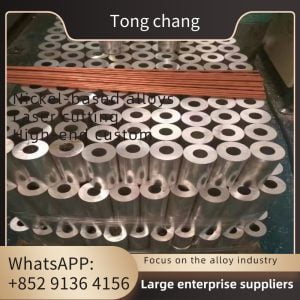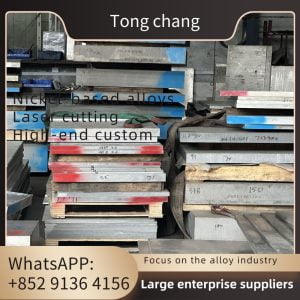| Product Name: | Stainless Steel Pipe Fittings | Standard: | ASTM A403 / ASME SA403, B16.9 |
|---|---|---|---|
| Material: | Stainless Steel 316L, 304, 304L, 304H, 321H, 310S, Etc. | O.D.: | 1/8”NB To 48”NB |
| W.T.: | Schedule 10s – Schedule XXS | Type: | Seamless, Welded |
| Shape: | Elbow, Tee, Reducer, Cap | ||
| High Light: | Seamless Stainless Steel Tee 1/8”, B16.9 Buttweld Pipe Fittings, WP316L Stainless Steel Tee | ||
Stainless Steel Pipe Fittings, ASTM A403 WP316L Elbow / Tee / Reducer
A stainless steel tee refers to a type of pipe fitting that has three openings. It is designed in the shape of a "T," with one inlet and two outlets at 90-degree angles to each other. The use of stainless steel in the construction of tees ensures durability, corrosion resistance, and high strength, making them suitable for various applications.
Stainless steel tees are commonly used in plumbing systems, fluid handling systems, and industrial processes where the flow of liquids or gases requires diversion or merging. They provide a reliable and leak-free connection between pipes or tubes, allowing for efficient distribution or collection of fluids.
ASTM A403 WP316L Stainless Steel Tee Specifications
| Size | 1/8"NB TO 48"NB IN |
| Schedule | SCH20, SCH30, SCH40, STD, SCH80, XS, SCH60, 80, 120, 140, 160, XXS |
| Type | Seamless, Welded |
| Form | Equal Tee, Reducing Tee |
| Material | Nickel Alloy ASTM / ASME SB 336 UNS 2200 (NICKEL 200), UNS 2201 (NICKEL 201 ), UNS 4400 (MONEL 400), UNS 8020 (ALLOY 20 / 20 CB 3, UNS 8825 INCONEL (825), UNS 6600 (INCONEL 600), UNS 6601 (INCONEL 601), UNS 6625 (INCONEL 625), UNS 10276 (HASTELLOY C 276) Stainless Steel ASTM / ASME SA 403 GR WP "S" / "W" / " WX" 304 , 304L, 304H, 304N, 304LN, 309, 310H, 316, 316H, 317, 317L, 321, 321H, 347, 347 H. Duplex Steel ASTM / ASME SA 815 UNS NO.S 31803, S 32205, S 32550, S 32750, S 32760. Carbon Steel ASTM / ASME A 234 WPB, WPC ASTM / ASME A 860 WPHY 42, WPHY 46, WPHY 52, WPH 60, WPHY 65 & WPHY 70. Alloy Steel ASTM / ASME A 234 WP 1, WP 5, WP 9, WP 11, WP 12, WP 22, WP 23, WP 91 |
| Standard | ASTM A403 /ASME SA403 | WP-W | ANSI B16.9/MSS SP-43 | ||
| KS : KOREAN INDUSTRIAL STANDARDS | KS B 1522: Steel Butt Welding Pipe Fittings for Oidinary use and Fuel Gas KS B 1541: Steel Butt Welding Pipe Fittings KS B 1542: Steel Socket Welding Pipe Fittings KS B 1543: Steel Plate Butt Welding Pipe Fittings | ||
| JIS : JAPANESE INDUSTRIAL STANDARDS | JIS B 2311: Steel Butt Welding Pipe Fittings for Ordinary use JIS B 2312: Steel Butt Welding Pipe Fittings. JIS B 2313: Steel Plate Butt Welding Pipe Fittings JIS B 2316: Steel Socket Welding Pipe Fittings | ||
Types of Tees: There are different types of tees based on their end connections, such as threaded tees, socket weld tees, butt weld tees, and flanged tees. The choice of tee depends on the specific requirements and the joining method used in the piping system.
Material: Tees can be manufactured from various materials, including metals like stainless steel, carbon steel, alloy, duplex steel.
Applications: Tees find extensive use in a wide range of applications. They are commonly employed in plumbing systems for residential, commercial, and industrial buildings. They are also utilized in industrial processes, oil and gas pipelines, water treatment plants, and HVAC (heating, ventilation, and air conditioning) systems.
Installation: Tee fittings can be installed using different techniques depending on the type of tee and the associated piping system. Threaded tees can be screwed onto the corresponding threaded pipes, while socket weld and butt weld tees require welding for secure connection. Flanged tees are joined by bolting them to flanged ends.
Flow Considerations: The configuration of tees allows for the splitting or combining of fluid or gas flow. The direction and rate of flow in the run and branch ports must be carefully considered during installation to ensure efficient operation and prevent issues such as pressure drop or backflow.






